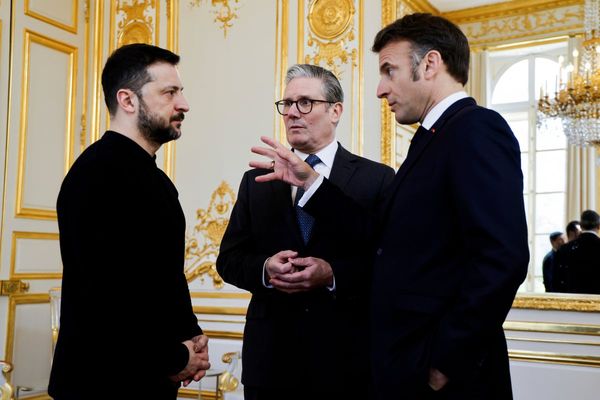
The seven-time F1 world champion was involved in a clash with Alpine's Alonso as the pair fought for position at Les Combes.
Hamilton suffered a sudden loss of water pressure after he took off and landed in the run-off area with a hard hit. Mercedes subsequently told Hamilton to pull over and stop shortly after the incident.
The impact also triggered the FIA medical warning light signal that makes a visit to the medical centre compulsory, and Hamilton received a warning from the stewards after he initially declined to go.
As previously reported, his power unit was subsequently returned to the Mercedes HPP facility in Brixworth, where it is still being examined. The V6 engine was brand new for the Belgian GP weekend, and if it can no longer be used, Hamilton will have to take a fourth example and thus a grid penalty in an upcoming race.
The gearbox carrier was cracked and the internals are also the subject of an examination.
“It was a large, large impact,” Mercedes motorsport strategy director James Vowles said in a team video. “It was measured at 45G on the SDR recorder in the car which is very big on a vertical load.
“He will be okay, he will be back in Zandvoort fighting. I think primarily for him he is frustrated, frustrated that he had a very fast race car, and a podium was possible but he, like all of us, are here to fight and continue moving forward.”

Vowles noted that aside from the PU and gearbox other elements of the car are being checked.
“There are enough photos floating around the internet to show just how high the car was and how it landed and the impact was large.
“What we noticed almost immediately after the impact on the ground was a loss of coolant. You can actually see on the onboard of Alonso that coolant really just flying out towards him, and then you started to see temperatures rise fairly quickly and that was the primary reason for stopping him on track.
“It will now take a few days to review all the components, clearly there are going to be overloads to the suspension components and gearbox and we need to make sure to understand the full extent of what’s required before Zandvoort.”
Vowles also acknowledged that Mercedes matched Ferrari’s race pace in Belgium having been a second off in qualifying.
“The approach and philosophy of what you are doing in terms of prioritising race pace or qualifying pace, I think might be different between the two teams,” he said.
“Obviously, the numbers are large, they are far more vast than we normally see, you would normally expect a tenth or two, not a second.
“What I can say is that we are gaining to them on degradation in the race. So, part of it might be just how the tyres are being used and car performance, part of it is degradation.
“And the bias we’ve got is the one that is scoring points race on race. Clearly though we have to improve our qualifying position because it is not just relative to Ferrari, we are also racing in a qualifying condition McLaren and Alpine as well.
“And in order to be racing at the front, in order to get our first win this season we have to make sure that the qualifying improves from where it is and that’s the focus that hasn’t just been this race, we’ve been looking at it across the season, and will continue to do so.”







